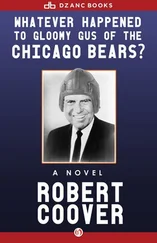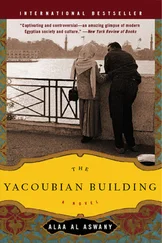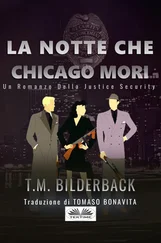He began to change the subject and asked me about my studies. We spent about half an hour talking about various subjects, and suddenly we heard a woman’s voice close to us: “Hi, sorry to interrupt. I have a question.”
“Go ahead,” I said quickly. She was a young woman in her twenties, blond and shapely. I had noticed her while we were talking, coming in from the bar and sitting at the table next to us.
“What language are you speaking?”
“Arabic.”
“Are you Arabs?”
“We’re from Egypt. Dr. Karam is a heart surgeon and I am study ing medicine at the University of Illinois at Chicago.”
“I’m Wendy Shore. I work at the Chicago Stock Exchange.”
“You’re lucky, then. You have lots of money.” She laughed. “I only handle the money. I don’t own it, unfortu nately.”
A jovial atmosphere filled the place. Suddenly Dr. Karam got up and patted me on the shoulder, saying, “I have to go now. I haven’t slept since yesterday and I have surgery at seven in the morning.”
Then he turned to Wendy, shook hands with her, and said, “Glad to meet you, Ms. Shore. I hope to see you again.”
I kept following him with my eyes until he disappeared through the bar door. I felt that I loved him and said to myself that I should take my time before judging people so as not to jump to the wrong conclusions as I had done. I came to when I heard Wendy’s merry voice saying, “Okay, tell me about Egypt.”
I carried my glass and moved to her table. She was beautiful; she had gathered her blond hair up and her gorgeous neck showed. There were light freckles on her cheeks that gave her a childlike appearance made all the more pronounced by her big blue eyes, which made her look as if she were in a state of constant astonishment. I remembered Graham’s advice, so I said, “I won’t tell you about Egypt until you let me buy you a drink.”
“That’s nice of you.”
“What would you like?”
“A gin and tonic, please.”
Since Chicago was settled, black migration to it has not stopped. Hundreds of thousands escaped slavery in the southern states and came to Chicago driven by the dream of becoming free citizens with dignity. The men worked in factories and their wives worked as domestics in homes or as nannies. They soon discovered that they had replaced slaves’ iron chains with other invisible but no less cruel shackles. In the early 1900s black people were allowed to live only on the South Side of the city, where the authorities built affordable housing for the poor. Many black people were unable to move to better neighborhoods because they were poor and were not able to leave the ghetto. For over a hundred years white people had an aversion, as deeply held as if it were a creed, to living together with black people. That aversion was sometimes referred to in American psychological literature as “Negrophobia.” All attempts, spontaneous and deliberate, to break the barrier failed. On July 27, 1919, it got very hot in Chicago and this made a seventeen-year-old black man, Eugene Williams, seek relief on the beach at Twenty-ninth Street. The beach, like everything else in the city, had its white and its black sections. Eugene felt wonderfully refreshed as he jumped into the cool water and kept swimming for about an hour. Then it occurred to him, unfortunately, to test his ability to stay underwater. So he held his breath and dived under the surface. And because a diver cannot precisely fix his location, Eugene bobbed up and opened his eyes only to discover that he had crossed the barrier and found himself in the white swimming area. He heard angry shouts and before he could hurry back to where he had come from, white swimmers grabbed him, blinded by anger at his sullying their territorial waters. They started calling him names and beating him; they punched him in the stomach and face as hard as they could. Some used wooden oars to beat him repeatedly on the head until he died. Then they discarded his body on the beach. What made matters worse was the fact that white policemen persistently refused to arrest the killers or interrogate them. During the six days that followed Chicago witnessed horrific racial clashes between white and black people, which left thirty-eight people dead and hundreds of others injured or homeless. The memory of Eugene Williams remained for a long time as a strong lesson for anyone who thought of breaking the barrier. In the year 1966, at the height of the civil rights movement against racism and the Vietnam War, the famous black American leader Martin Luther King Jr. arrived in Chicago and led a procession of tens of thousands of predominantly black marchers through white neighborhoods. King wanted to send a Christian message of love and brotherhood and to declare, at the same time, that the race situation was no longer tolerable. But the result was violent and frustrating. White people attacked the march viciously, throwing stones and rotten eggs and tomatoes on the marchers. They attacked them with clubs and gunfire, and many black people were injured. It wasn’t long afterward that King himself was shot by a white racist fanatic. In 1984, a black couple made a fortune and bought a house in a rich white neighborhood. The answer came right away: their white neighbors harassed them and threw stones at them, which resulted in serious injuries. Then the angry neighbors went further, burning first the garage and then the whole house. The couple fled. A similar thing happened to another black couple the same year, and the result was even more tragic.
And thus, throughout Chicago’s history, the racial barrier remained as solid as a rock that could not be ignored or transcended: the north of the city and its suburbs were made up of upscale communities inhabited by a white elite in the highest income brackets in the country, while in the black South Side poverty reached levels hard to imagine in America. Unemployment there was rampant, as were drugs, murders, rapes, and robberies. Education and health services were substandard, and everything was distorted, even the concept of family. Many black children were raised by their mothers alone because the fathers left, were killed, or were in jail. It was this glaring contrast between those two worlds that made the famous sociologist Gregory Squires resort to the language of literature when he prefaced his research on Chicago with the following: “It’s not the many contradictions that Chicago embodies that distinguish it. What makes it a unique city is that it always takes its contradictions to the utmost.”
AS SOON AS RA’FAT THABIT drove into Oakland, he was horrified: many of the redbrick homes were in ruins; backyards were filled with old junk and garbage; gang slogans were sprayed in black and red on the walls; groups of young black people were standing on street corners smoking marijuana; loud music and noise came from some open bars. Ra’fat’s anguish increased as he asked himself: How does my daughter live in such a dump? He was determined to see her by any means. He had not thought about what he would tell her when he knocked on her door and awakened her at two o’clock in the morning. He was going to see her now and let come what may. That was what he told himself as he slowed down and looked at the house numbers. He knew Jeff ’s address by heart. When he got close to the house he went into the parking lot across the street. He locked the car using his remote and hurried to get to the street. It was pitch-dark, and he was suddenly overcome by an uncomfortable feeling. As soon as he passed the first row of cars, he sensed that someone was following him. He tried to dispel the thought but heard, clearly this time, something moving in the dark next to him. He stopped and turned around and little by little was able to make out a large body approaching.
Читать дальше
Конец ознакомительного отрывка
Купить книгу












